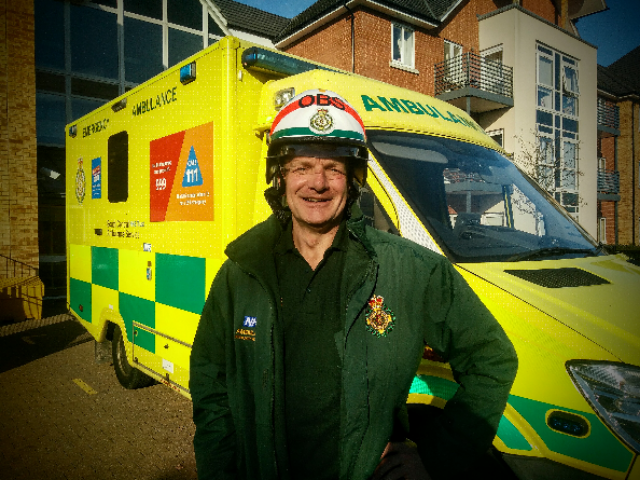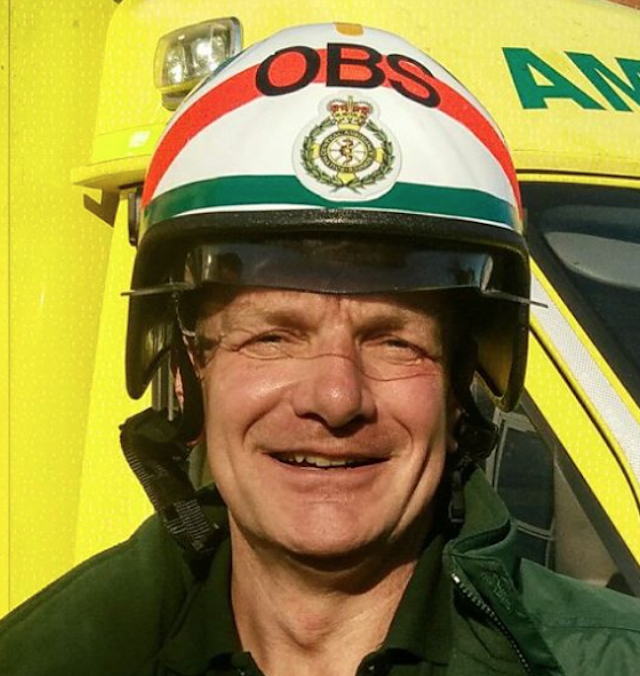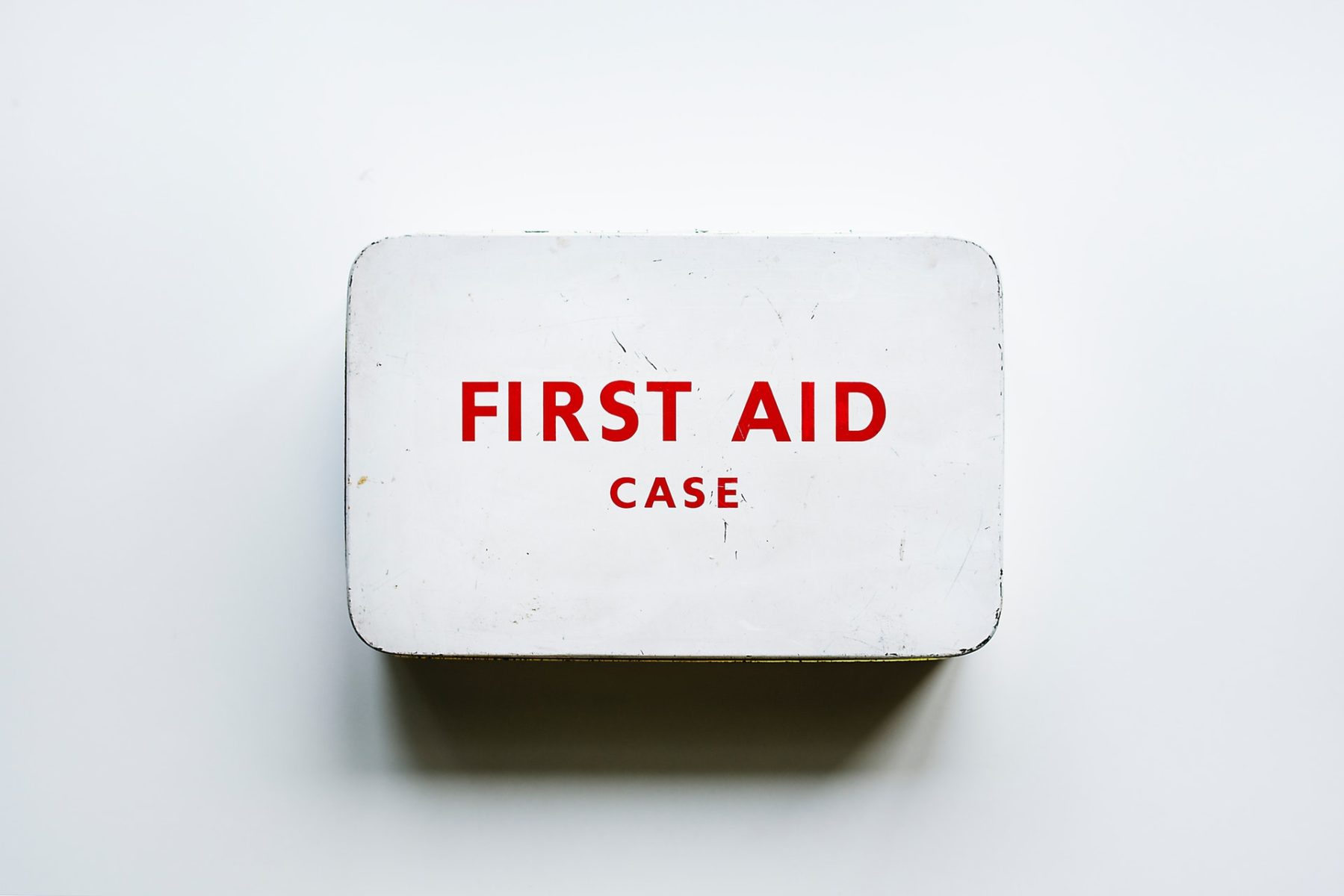“So…..basically…what you’re saying is ….go away and come back in a year’s time if you’re still alive?”
“Well…yes”
“Is that because the paperwork would be horrendous if I pegged it on a call?”
“Well…yes”
And so went my first attempt, six months after my cardiac-arrest to become a Community First Responder (CFR).

CFRs are volunteers who work alongside ambulance service crews to deliver critical care where it is most needed in their local area. They are trained in basic clinical skills, “customer service skills” i.e. dealing with members of the public and, most importantly, basic life support skills (BLS) i.e. how to perform CPR and how to use a defibrillator.
The role is designed to be an adjunct to the emergency care ambulances and crews rather than a replacement. The CFRs are deployed in their local area to incidents (of the most serious type) if they can arrive “on scene” and deliver care in advance of the arrival of an ambulance, this being particularly useful when the demand on the ambulance service peaks and ambulance wait-times increase.
The role of a CFR can be exciting, it can be mundane, most of the work is not about “saving lives” (this is much the same for ambulance crews) but is about delivering care to non life-threatening problems. However, as a CFR, you are admitted to the “inner sanctum” of the emergency services. You get to see and be part of the organisation that delivers emergency care (the complexities of which most people have no comprehension), you get to help people when they are at their most vulnerable, you get to see some horrendous things. But, most importantly, you get to perform a very worthwhile and infinitely rewarding role.
Becoming a CFR involves selection, DBS clearance (background checks to allow working with children and vulnerable adults) and basic training. Once all this is completed then the CFRs are “ready to go” saving lives in their community.
Well, that’s the theory. The realities are, slightly more complex.
My journey to becoming a CFR began when in Bart’s Hospital following my cardiac-arrest. My arrest was dramatic, however, despite my heart having stopped for seven minutes, the bystander CPR and defibrillator shock that I received meant that I was resuscitated and conscious by the time the emergency services reached me. Consequently, rather than spending my sojourn in Bart’s hospital sedated and in an induced coma I was fully conscious and “normal”. This left plenty of time to reflect upon my brush with death and upon the excellent care that I received. Whilst pondering this I decided that if I survived to leave hospital then I would do something to “give back”, be this hospital voluntary work, charity work or applying my intellectual capabilities to “helping others”. I was eager to “return the favour”, to help someone else in need like myself.
Initially, I investigated hospital voluntary work, however, having returned to full-time work, the time-requirements were incompatible with the demands of my job. I progressed to looking if there any voluntary roles with the London Ambulance Service (LAS) as London is and was where I worked it was in London that I had my cardiac-arrest. I stumbled across information about community responders and “co-responders” (another type of responder) but these required you to live in London and to have a car. I had the car but I lived in Hampshire. Defeated I decided to search for something close to where I lived so I perused the South Central Ambulance Service (SCAS) web-site and found that they, too, had a CFR scheme. I made contact and then awaited my recruitment, training, and path to saving lives.

I was somewhat disappointed.
I was invited to SCAS headquarters, which was, fortunately, quite close to where I live. Thinking ahead I prepared a file with information and notes from Bart’s Hospital (I had, prior to this, requested a copy of my in-patient), and, armed with this made my way to SCAS HQ at the appointed time. I was greeted by two paramedics in their green uniforms who were responsible for running the CFR scheme and was taken to their cafeteria for a cup of coffee and a chat.
We discussed the role of the CFR and how to apply (fill out a form) and then we got on to discussing my “health”.
In dealing with health-professionals I had come to understand their mode of behaviour when meeting me for the first time. Firstly, there is the disbelief: how can this healthy looking person have suffered a cardiac-arrest ? He must be making it up as so few people survive and he looks so healthy, so it can’t be true. And, secondly, when they accept that I did suffer a cardiac-arrest: well, he did survive buy he must be so fragile afterwards he had better be careful and “take things easy”.
True to form my interaction with the paramedics followed pretty much this pattern. I was then asked about my current state of health: “Well, I’m back to normal, back to full fitness and if it weren’t for taking Bisoprolol I’d be back to the person I was before my arrest”.
My statements and views were noted by the paramedics, and after some discussion between them they announced that, much as they would like to have me as a CFR it was too soon after my cardiac-arrest and that I needed to wait another year before applying just in case anything happened to me meanwhile (the conversation went pretty much as described at the start of this article).
I left SCAS HQ dejected, I had high-hopes for myself, but it was not to be.
My first failure at attempting to become a CFR.
Fast forward a year.
I dutifully filled out an SCAS CFR application form and set it off. I waited eagerly for a response. I received one. I was disappointed. SCAS were reorganising the CFR roles and training and would not accept any new applications for the next six months.
My second failure at attempting to become a CFR.
Fast forward six months to July 2018.
I contacted SCAS via email. There were holding a selection day in Newbury at the SCAS training centre. My hopes were raised. However, all the places had been taken so I was put on a reserve list. I was slightly disappointed. However, I am quite a determined individual, and I like to think resourceful, so I did not give up hope.
The selection day was to be held on a Sunday, so the Friday before I contacted the coordinator and asked if I could be “squeezed in” as I was really keen to become a CFR. Luck was on my side, someone had dropped out. It was game on!
Sunday, the selection day. It was hot, rainy and humid and the normal 40 minute drive to Newbury took 90 minutes due to the rain and surface water. Having awoken early and, consequently, left early, I arrived in plenty of time and was shown into the training centre kitchen where other CFR hopefuls were waiting. We drank coffee and chatted and talked about our motivations for becoming CFRs (I did not mention my cardiac-arrest at this point).
The selection involved a series of “stations” where we had to work through scenarios and questions – basic first-aid, CPR, DBS forms (criminal record background checks), and, finally, an interview. The interview was conducted by a the CFR scheme head but there were four other paramedic in the room observing me. The interview comprised questions about my background, what I did for a living, my voluntary work in the past, questions aimed at assessing my personality and suitability.

Then the long awaited question was asked: “why do you want to become a CFR”.
I had mentally run through my response before driving to the selection. I didn’t just want to blurt out my medical history as I thought that I would look too egotistical. So I started with my wanting to do voluntary work again, do something worthwhile and then moved the conversation around to the ambulance service, the almost infinite demands placed upon it by the public and then the out-of-hospital cardiac arrest survival rate being dire and could only be improved by bystander intervention (e.g. the public or CFRs). I received nods of approval from the paramedics. I then slipped into the conversation that “by the way, I survived an out-of-hospital cardiac-arrest”.
There was stunned silence.
The next ten minutes comprised me being grilled about my experience (mainly from an interest point of view as they were fascinated to hear my story) and then I received the pronouncement: “with my background, and in, particular, my cardiac-arrest survival I was precisely the sort of person we want as a CFR”.
Success! Never let it be said that a cardiac-arrest doesn’t open doors for you!
Feeling pleased I returned home, smiling.
In September 2018 I started my CFR training. This was to comprise four days if intensive classroom work and practical skills split over two weekends. The first weekend was a “baptism of fire”, I have always had an interest in medical matters (I almost became a doctor in my mid thirties) but there was so much to learn – basic anatomy, ailments that we were likely to see and the treatment, Oxygen therapy, how to apply as mask to a patient and aid their breathing, airway insertion. Then came the CPR training, which was straightforward but practiced repeatedly so that we were “skilled” in performing this. I quipped when we had finished that now I knew how to give CPR as well as receive it. Only the paramedic giving the course appreciated the remark.
In the afternoon of the second day’s training there was a multi-choice examination followed by practical tests.
At the end of the second day, I was informed that I had passed the training. I was now a qualified CFR.

I received my paramedic-green polo shirt with the SCAS and NHS logo on it. I purchased my own trousers (black) and black steel-soled safety boots (I didn’t fancy standing on a needle and it penetrating my foot). The uniform is designed to make CFRs appear in paramedic-green but the black trousers set you apart so that in an emergency situation you are not confused with a paramedic by other emergency services.
I also received a yellow kit back. This is a large yellow rucksack packed with everything a CFR should need: oxygen, masks, bandages, dressings, a device to measure blood oxygen levels and, of course, a defibrillator. I also received a SCAS mobile phone which contained an app allowing me to log on for duty.
I was ready to go.
To help me “get going” I was initially paired-up with an experience CFR who was my local area’s CFR coordinator. So my first calls were done under his supervision. Confidentiality prevents me divulging their details, but needless to say they were fairly minor. Being a on call as a CFR is not onerous. You log on/off using the SCAS mobile phone when you want to, there is no rota or requirement to be on call all the time, volunteers do what they can.
Then my mentor went on holiday. I was on my own. I was flying solo. I logged on for the first time.
A call came and I attended as soon as I could. It was nerve wracking, I was “on the spot” and having to make important clinical decisions whilst waiting for the ambulance to arrive, the adrenaline was flowing. Call completed and the ambulance departed I returned home triumphant. I was up and running.
Since then I have attended many calls on my own, I have run shifts as an observer in an ambulance, I have travelled on blue-lights to A&E helping with patients in the back of the ambulance for serious emergencies. I have become part of the SCAS team, they have welcomed me in.
The role of the CFR is not easy, you get to see some quite distressing situations, you get to see blood, you get to see body fluids, you get to see wounds and injuries, and you can get to lose some sleep. However, the role is very rewarding and I am so glad that I persevered and got to be a CFR.
I also feel I have helped contribute to patient care, I have attended to people who really needed my help, I feel that I have made a difference to some people’s lives.
Becoming a paramedic is calling……

Physicist, software developer, CFR, lifesaver, SCA survivor

